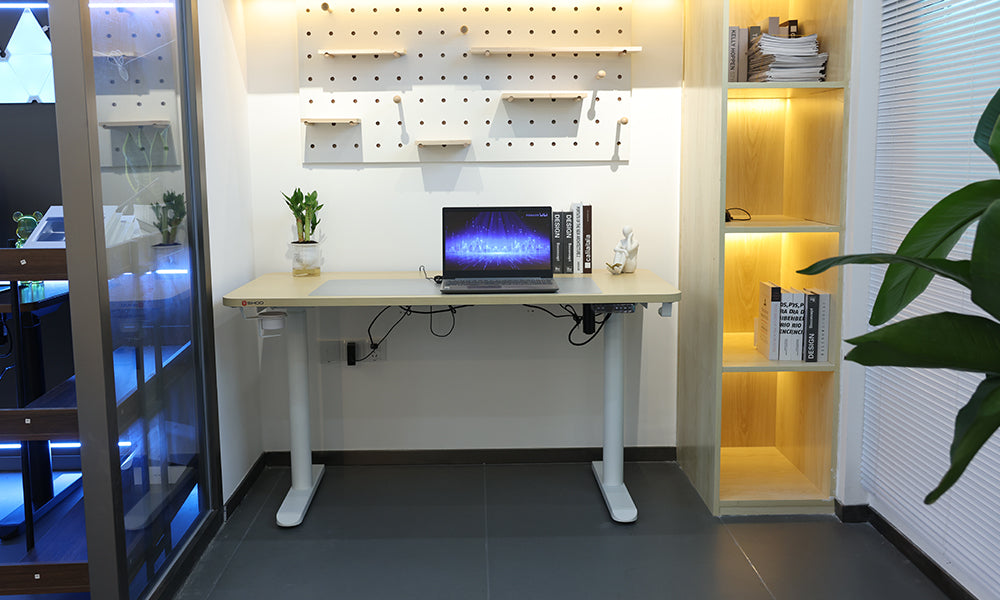Promoted for their potential health benefits, standing desks are seen as a way to reduce the risks associated with prolonged sitting, such as obesity, cardiovascular disease, and musculoskeletal problems. However, if you are overweight, you might wonder if standing desks are suitable for you. The answer is nuanced, and it involves considering various factors including health, comfort, and lifestyle adjustments.
The Benefits of Standing Desks
Standing desks are praised for several potential health benefits:
- Reduction in Sedentary Behavior: Standing rather than sitting for prolonged periods can help reduce the negative effects of a sedentary lifestyle. This includes a lower risk of weight gain and obesity, as standing burns more calories than sitting.
- Improved Posture and Reduced Back Pain: Many people find that standing desks can help improve posture and reduce the risk of developing back pain associated with long hours of sitting.
- Increased Energy Levels and Productivity: Standing can lead to increased energy levels and enhanced mood, which in turn can boost productivity and focus.
- Potential for Better Circulation: Standing can improve circulation, reducing the risk of developing conditions such as deep vein thrombosis.
Considerations for Overweight Individuals
While standing desks offer many benefits, there are specific considerations for overweight individuals:
- Physical Discomfort and Fatigue: Standing for long periods can be uncomfortable, especially if you carry extra weight. This can lead to fatigue and strain on the feet, legs, and lower back.
- Joint Health: Overweight individuals are at a higher risk of joint issues, particularly in the knees and hips. Prolonged standing can exacerbate these issues if not managed properly.
- Gradual Adjustment: Transitioning to a standing desk should be gradual. Starting with short standing periods and gradually increasing the duration can help the body adapt without causing excessive discomfort or strain.
- Footwear and Floor Mat: Wearing supportive footwear and using an anti-fatigue mat can significantly reduce discomfort and lower the risk of developing foot and leg problems.
Making the Transition: Tips for Overweight Individuals
- Start Slowly: Begin by standing for short intervals, such as 15-20 minutes per hour, and gradually increase the duration as your body adjusts. Listen to your body and sit down when you feel fatigued.
- Use a Sit-Stand Desk: Invest in a desk that allows you to alternate between sitting and standing. This flexibility can help you find a comfortable balance and prevent excessive strain.
- Ergonomic Setup: Ensure your desk setup is ergonomic. The desk height should allow your elbows to be at a 90-degree angle, and your computer screen should be at eye level to prevent neck strain.
- Footwear and Support: Wear supportive shoes and consider using an anti-fatigue mat to reduce pressure on your feet and legs. These mats can make standing more comfortable by providing cushioning and support.
- Movement and Stretching: Incorporate movement and stretching into your routine. Simple exercises like calf raises, ankle circles, and gentle stretches can help alleviate stiffness and improve circulation.
- Listen to Your Body: Pay attention to your body’s signals. If you experience pain or discomfort, take a break and sit down. Over time, your endurance will likely improve.
The Role of Lifestyle Changes
Using a standing desk can be a positive step towards a healthier lifestyle, but it should be part of a broader strategy that includes regular exercise, a balanced diet, and other healthy habits. Here are some additional tips:
- Regular Exercise: Incorporate regular physical activity into your routine. Even light exercises such as walking, swimming, or cycling can have significant health benefits and support weight management.
- Healthy Eating: Maintain a balanced diet rich in fruits, vegetables, lean proteins, and whole grains. This can help manage weight and provide the necessary nutrients for overall health.
- Hydration: Staying hydrated is crucial. Drinking water throughout the day can help maintain energy levels and support overall health.
- Sleep: Ensure you get enough sleep. Quality sleep is essential for weight management, mental health, and overall well-being.
- Mindfulness and Stress Management: Practice mindfulness and stress management techniques such as meditation, deep breathing exercises, or yoga. Stress can impact weight and overall health, so finding ways to manage it is important.
Conclusion
Standing desks can be a valuable tool for promoting a healthier lifestyle, even for those who are overweight. However, it’s important to approach the transition thoughtfully and gradually to avoid discomfort and potential health issues. By combining the use of a standing desk with other healthy habits, you can work towards improved well-being and productivity.
Ultimately, the key is to listen to your body and make adjustments that suit your individual needs. With the right approach, a standing desk can be an effective part of your journey towards better health and a more active lifestyle.



































